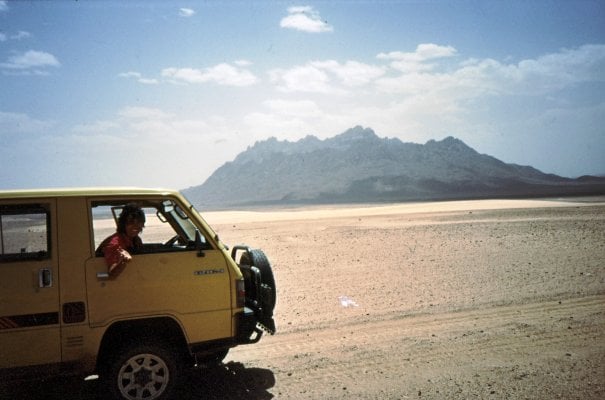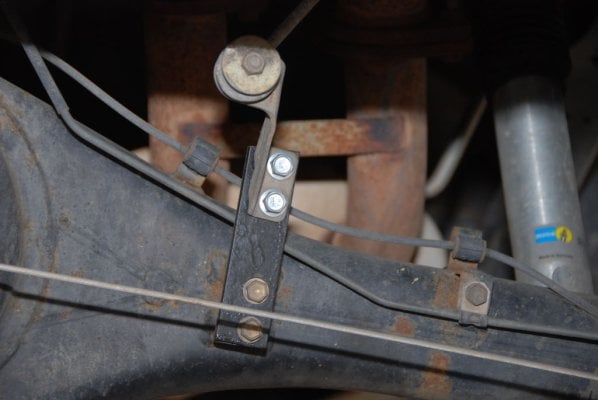generubin
Electric Baja
I searched this website for any discussion of brake proportioning valves and was surprised, actually frightened to find no discussion of them.
There has been plenty of talk already on this site of overloading 1/2 trucks to the point of dangerous handling and braking. And there are those who will still use a mini-truck or 1/2 ton by adding Firestone Ride Rites or Add-A-Leafs.
Here is a serious braking danger to the occupants by the use of any rear suspension mod that brings the height of your truck up to normal although you have mounted a camper in it. On many trucks (most if not all Toyota's) there is a valve attached to the frame just above the rear axle. It is controlled by an arm/rod that is attached to the axle housing. Because the weight in the back of a pickup truck can vary from zero to a lot, the manufactures design this valve to proportion the braking between the front and rear of vehicle by sensing the location of the axle in relation to the frame. The more weight you put in the back of the truck, the closer the axle is to the frame, the more brake fluid pressure travels to the rear brakes to avoid a spin-out or rollover. Here is where the danger comes in: If you install a camper with Ride Rites or any other lifting device, you have fooled the brake system into thinking there is no weight in the rear of the truck (yet, of course there is and a lot of it!). When you brake hard the front brakes will do most of the braking, the rears very little, so the back of the truck will want to trade places with the front of the truck. Liken it to going down a steep hill on your bicycle and squeezing only your front brakes.
There is a simple fix but I have not seen a single person talk about it on this site. Before you mod your suspension, with the camper on the truck and loaded, measure the distance from the top of the axle house to the frame. After the mods make the same measurement. If say the difference is 2 inches, then you must raise the proportioning rod at the axle housing by the same 2 inches. This tells the valve to send more power to the rear brakes to compensate for your heavier load. Be sure you do this. Not to is a serious risk to your life in any emergency braking.
And don't even get me started on Ride Rites! Be sure to read the threads on 1/2 ton vs. 3/4 ton.
There has been plenty of talk already on this site of overloading 1/2 trucks to the point of dangerous handling and braking. And there are those who will still use a mini-truck or 1/2 ton by adding Firestone Ride Rites or Add-A-Leafs.
Here is a serious braking danger to the occupants by the use of any rear suspension mod that brings the height of your truck up to normal although you have mounted a camper in it. On many trucks (most if not all Toyota's) there is a valve attached to the frame just above the rear axle. It is controlled by an arm/rod that is attached to the axle housing. Because the weight in the back of a pickup truck can vary from zero to a lot, the manufactures design this valve to proportion the braking between the front and rear of vehicle by sensing the location of the axle in relation to the frame. The more weight you put in the back of the truck, the closer the axle is to the frame, the more brake fluid pressure travels to the rear brakes to avoid a spin-out or rollover. Here is where the danger comes in: If you install a camper with Ride Rites or any other lifting device, you have fooled the brake system into thinking there is no weight in the rear of the truck (yet, of course there is and a lot of it!). When you brake hard the front brakes will do most of the braking, the rears very little, so the back of the truck will want to trade places with the front of the truck. Liken it to going down a steep hill on your bicycle and squeezing only your front brakes.
There is a simple fix but I have not seen a single person talk about it on this site. Before you mod your suspension, with the camper on the truck and loaded, measure the distance from the top of the axle house to the frame. After the mods make the same measurement. If say the difference is 2 inches, then you must raise the proportioning rod at the axle housing by the same 2 inches. This tells the valve to send more power to the rear brakes to compensate for your heavier load. Be sure you do this. Not to is a serious risk to your life in any emergency braking.
And don't even get me started on Ride Rites! Be sure to read the threads on 1/2 ton vs. 3/4 ton.



